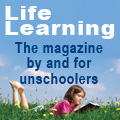The Game of Shoes
By Bernard De Koven

There is a game. It belongs to the genre of what is unfortunately referred to as ice-breakers. I prefer it to think of it as a game of group levity. It's called Shoe Pile Mingle, although I would be surprised if that's all it's called. I prefer to think of it as "a game of shoes."
When we played it at our New Games events, we liked to create a fantasy around the game, because it made the subsequent silliness somewhat excusable, and also because it helped transport us, as a group, to someplace else.
The story: Purportedly, during World War II, on some island somewhere, an airplane accidentally dropped a box of boots into the middle of the purported jungle. The natives, finding the box of boots, immediately assumed that it was a gift from the gods, and, over the years, developed an elaborate ritual of bootish gratitude and wonder.
And we (everyone except the “chief” a.k.a. “you”) are anthropologists. As anthropologists, invited to participate in this sacred ritual, we must do our very best to remain inconspicuous – not asking questions, following as best we can.
(Feel free to elaborate on this story in whatever way you are so moved, as the only purpose of it is to get people in the mood for deep silliness.)
When the ritual begins, each player holds a pair of shoes in his or her hands – one shoe in each. The Chief raises one shoe, and chants, loudly, while shaking the shoe solefully – or however the Chief thinks the shoe should be shaken. Everyone follows, enthusiastically, but reverentially.
The Chief then raises the other shoe, and again chants, shakes and moans. The community follows.
The Chief continues in some appropriately magical manner, calling the gods forth, giving the shoes tongue, shaking and clapping the shoes together while bowing and twirling and jumping and things.
At a Chief-determined point, all motion suddenly stops. The Chief, facing center, raises both shoes heavenward, yells something spiritual, and throws one shoe into the center of the circle. And then, after the Chief, seized by the trance-like power of the whole thing, has finished dancing and ranting appropriately, the second shoe is thrown in the center (with the Chief, perhaps, facing out of the circle, and throwing the shoe between his or her Chiefly legs).
So what you now have is a group of shoeless people, standing in a circle, laughing at all the meaningless pomp (insert “pump” pun here), facing a pile of shoes.
When the Chief feels the rightful respect has been re-established, she or he ritualistically strides to the shoe pile, selects a shoe, and raises it heavenward – shaking it meaningfully. The Chief then repeats this very act with a second, non-matching shoe, and motions to all assembled to do the same. While the congregants are engaged in shoe-hunting, the Chief admonishes anyone who holding a pair of matching shoes to chuck one of the shoes back into the pile and search for a non-matching replacement.
Here we reach a conceptual bifurcation. Ideally, players would then begin putting the shoes on their feet, but, from time to time, this opportunity is greeted less than enthusiastically, as it entails wearing someone else’s shoe, which, for some, is simply too odious or odorous of a task. If the group can rise above it, so to speak, the putting-the-shoes-on-the-feet is a far more satisfying and silly-making choice. In case of resistance, the Chief instructs the players (through mime and moaning) to keep the shoes in their hands.
The final part relies heavily on the Chief’s theatrical abilities. The goal is for each player to find the matching shoe for each of the shoes in his or her possession, without letting go or losing their chosen shoes. How the Chief manages to communicate this can be indeed wondrously funny.
Finally, and, evidently, surprisingly, everyone is in a circle again, all shoes are back in their pairs, and the ritual has achieved its natural conclusion. The Chief then directs the players to step into the shoes that they claim to be theirs, and, once uniformly shod, to give thanks to the shoe gods for their accomplishment.
Yes, there is a great deal of laughter to be had. And yes, there is no real significance to the whole exercise except the fun, which, from time to time reaches extraordinary levels, considering the sheer ridiculousness of the whole activity. Order has been restored. Magically mystical mayhem has been transcended. A moment of shared, collectively created, mock (but not mocking) spirituality (yes, spirituality) was most definitely experienced, despite and because of it all.
In 1971, Bernie De Koven completed a collection of over 1000 children’s games, organized according to different forms and complexities of social interaction. Called the Interplay Games Curriculum, and published by the School District of Philadelphia, it led to his founding of The Games Preserve, a retreat center for the exploration of games and play for adults, which functioned as a branch of The New Games Foundation. In 1978, he published “The Well-Played Game,” which was re-released by MIT Press in 2013. His most recent book “A Playful Path” was published the following year. He has designed games of all kinds, for couples, families, children, elders. But his greatest impact has been his development of a theory of fun and playfulness, which can affect every aspect of personal and interpersonal, community, and institutional health.
Copyright © Life Media
Privacy Policy
 



|

